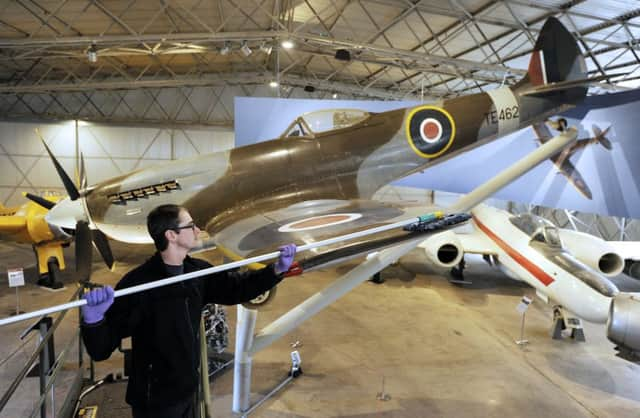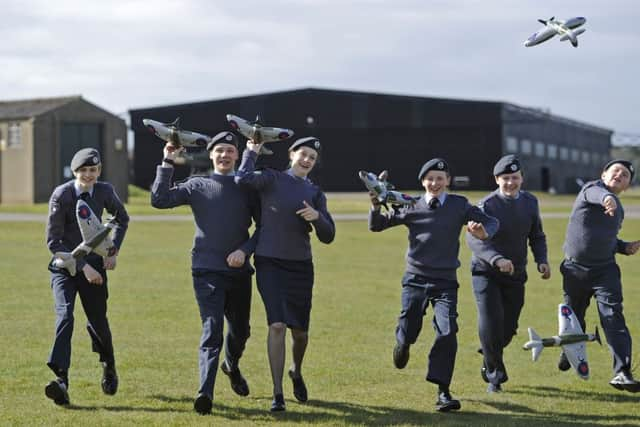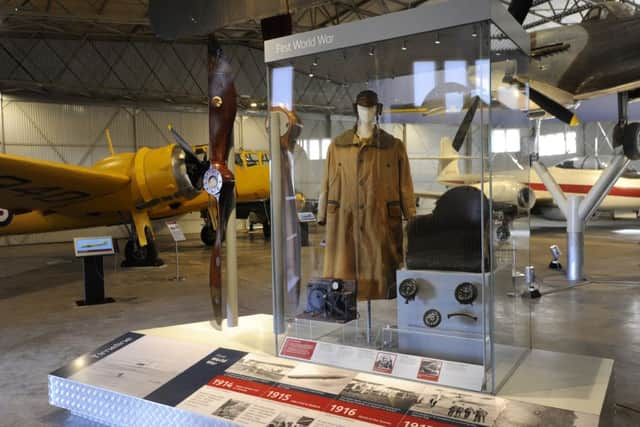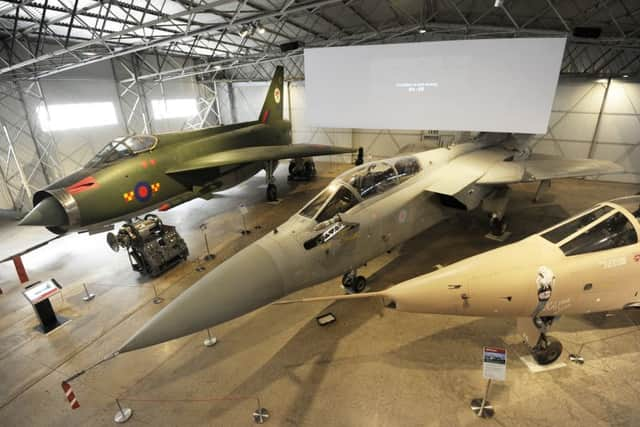Ex-WW2 hangars to host Scottish aviation history celebration


Dozens of military and civilian aircraft will go on display this weekend along with state-of-the-art displays and little-seen memorabilia linked to the history of aviation.
Rare flight footage has been sourced for the new-look hangars, along with specially-conducted interviews with defenders of the nation and others whose lives were touched by the exhibits.
Advertisement
Hide AdAdvertisement
Hide AdThe £3.6 million project at the National Museum of Flight, in East Lothian, is the latest phase of a long-term revamp instigated after a Concorde was secured in 2004.


Part of the museum, which has been open at the former RAF station at East Fortune since 1975, has been closed for over a year to accommodate the work on the two hangars, which date back to 1940-41 and were intended to last a decade. New heating and installation systems have been installed which have allowed precious uniforms, military documents and personal memorabilia to go on display for the first time.
Steve McLean, general manager of the museum, said: “Before this work was carried out there was only really a small panel next to each aircraft we had on display.
“We’ve carried out at least one interview for each aircraft, which has really upped the interpretation we can offer. We are really trying to widen the audience that comes here.
Advertisement
Hide AdAdvertisement
Hide Ad“We’ve built a platform in the middle of the military hanger so that our visitors can get up and look over the top of the aircraft, as well as watch a new film that we’re showing which takes people on a journey through the history of aerial warfare.


“Our visitors also want to see inside cockpits. Instead of having sets of stairs at ever aircraft, which are not accessible to everyone, we’ve photographed them in detail and every touchscreen in the hangars allows people to zoom in, although they will still be able to see inside from the platform.”
More than 30 aircraft are spread between the two hangars, including a Supermarine Spitfire, the RAF’s first supersonic jet fighter, the oldest-surviving Hawker Siddeley Harrier jump jet, which was the world’s first vertical take-off combat aeroplane, and a rocket-powered Messerschmitt Me 163B-1a Komet, which was the fastest aircraft of the Second World War.
There is a celebration of the Royal Navy’s most decorated pilot, Leith-born Captain Eric “Winkle” Brown, who visited the site shortly before he passed away last month and was reunited with the Messerschmitt aircraft he captured at an airfield at Husum, in northern Germany, in 1945.
Advertisement
Hide AdAdvertisement
Hide AdCommercial and leisure aircraft include a Britten Norman Islander, which were deployed as air ambulances for Orkney and Shetland for 40 years. Visitors can hear Belle Spence recall giving birth in a flight above the island of Whalsay. They can also view remains of a Spartan Cruiser and relive the incident when it crashed in Ayrshire while delivering film reels to a cinema in Campbeltown in 1938.


Also on display are a logbook kept by Vickers Wellington bomber pilot Douglas Butterworth, who was killed in 1942, a First World War anti-personnel metal dart, which could penetrate a steel helmet after being dropped from aircraft onto enemy soldiers on the ground, and the Fritz X, a guided German bomb from the second World War.
The displays are brought up to date with a prototype of the system used by Eurofighter Typhoon pilots, which allows flight and target information to be projected onto the helmet of their visor and can let them home in on targets using just the movement of their eyes.
Dr Gordon Rintoul, director of National Museums Scotland, which runs the attraction, said: “The National Museum of Flight is one of Scotland’s top days out and these redeveloped aircraft hangars offer dramatic new experiences for our visitors.
Advertisement
Hide AdAdvertisement
Hide Ad“Spanning a century of aviation, the displays present our spectacular aircraft in new and dynamic ways, revealing for the first time the engaging stories of some of the people who flew and worked with them.


“Before we acquired Concorde in 2004 there had not been really been much development at the site for decade, so that was really the catalyst to draw up a development plan, which has been around 10 years in the planning.
“We’re obviously now going to be thinking about future phases of development. We still have a further two hangars to restore, as well as a number of other historic buildings on the site.
“The key thing is we now have a model for how we can go about that. We’ll be planning for the next phase of development after the summer - there’s lots more to happen in the future.”